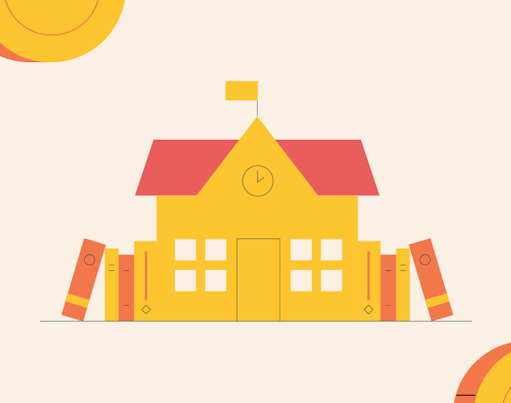Whether we’re buying coffee or tipping a busker, many of us have made the jump to cashless payments, so why shouldn’t kids do the same? If your pocket money routine or day-to-day management of money in your family still involves lots of coins, notes and hand-written IOUs, then you may want to think about getting a contactless debit card for your kids, such as NatWest Rooster Money’s Rooster Card. However, which one should you choose? Is a debit card, or a prepaid debit card best? And how do you explain the difference to your children? In this post, we break it all down for you…
Card for ages 6-17. Parent/Guardian must be 18+ and a UK resident. £19.99/yr or £1.99/mo. Other fees may apply. T&Cs apply.
What’s the difference between a debit card and a prepaid debit card?
A debit card is a card used to pay for things. It’s linked to a person’s bank account, and when they spend with the card, the money comes out of their bank account.
A prepaid debit card is still used to pay for things, but it’s a little bit different; prepaid debit cards aren’t linked to a bank account – you don’t need a bank account to use one. Instead, the card is topped up with money, like a Pay As You Go phone, or a gift card. Once that money is spent, more will need to be added in order to keep spending.
Tips and things to think about with prepaid debit cards for kids
Prepaid debit cards are backed by big companies such as Visa and Mastercard, and still work like normal debit cards; you can buy things with them, and use contactless payment systems with them; you can even use them on the bus, train and London underground. The only thing you’ll need to remember is that a prepaid debit card won’t work if there isn’t enough money on the card to cover the purchase. For example, if you only have £10 on a prepaid debit card, you won’t be able to use it to buy a £50 video game. Also, some prepaid debit cards, such as the Rooster Card, restrict users’ spending; Rooster Cards can’t be used in certain shops for adults, such as off-licences, for example.
The advantage of getting a prepaid debit card is that they won’t need a bank account, and can’t spend money they don’t have. Prepaid debit cards are a good way for parents to offer some financial independence to children, while still remaining in control. However, there are some functions associated with bank accounts that most prepaid debit cards can’t offer, such as standing orders and direct debits.
Are prepaid debit cards as safe as debit cards?
Yes. Both debit cards and prepaid debit cards are secured with a PIN (personal identification number) and a CVV Number (Card Verification Value), which stops other people from using the cards in shops or online. You can also temporarily freeze or completely cancel prepaid debit cards in the same way as you’d do for normal debit cards. Both cards are often a lot safer and more convenient than carrying around cash.
Rooster Cards have dynamic CVV Numbers. This means that the three digit number needed for online shopping is generated through the app each time it’s used.
Which is better for kids, a debit card or a prepaid debit card?
A prepaid debit card such as the Rooster Card can be a good starting point for kids, as it offers controls and visibility for parents. You can find out more about what age you can get a debit card.
Also, you can’t go into an overdraft on a prepaid debit card, which means kids can’t spend more money than they have (parents may view this as the greatest benefit).
What’s more, prepaid debit cards are well suited to pocket money, because they let parents top up cards with pocket money quickly and easily, and both children and guardians can often see how much has been given to a child and how much has been spent.
Is the Rooster Card a prepaid debit card?
Yes, NatWest Rooster Money’s Rooster Card is a prepaid Visa debit card for kids. It’s linked to the Rooster Money app, and lets parents and children keep a track of pocket money, view PIN, generate CVVs, buy things in shops, online, at school, in cafes and aboard, and can also be used to travel on tubes, buses and trains. Parents can top it up without being charged a fee, money can be moved about really easily, and the card can be temporarily frozen, or completely replaced if it gets lost.
Tricky terms explained
Debit This is both a noun and a verb. It means an entry in an account recording stating what is owed or has been spent, and also the act of taking money for a purchase. It comes from the Latin word debitum, which means what is due.
Prepaid This means money added onto something, or paid for in advance. You can get prepaid envelopes, which you can post without adding stamps, or a prepaid debit card, with money added onto it, ready to spend.
PIN This stands for Personal Identification Number. It’s the series of four digits that you enter at ATMs to withdraw money, and at chip and pin terminals in shops, when you pay for things.
CVV This stands for Card Verification Value. It’s usually a set of three or four digits; a lot of cards have them printed on the back, beside the signature strip, but with Rooster Card you generate the CVV in our app. Often when you buy something over the internet, you’ll be asked for the CVV as an additional layer of security.
If you think a prepaid kids debit card is right for you, click here to learn more about the Rooster Card and how it could give your kids a head start with money.


